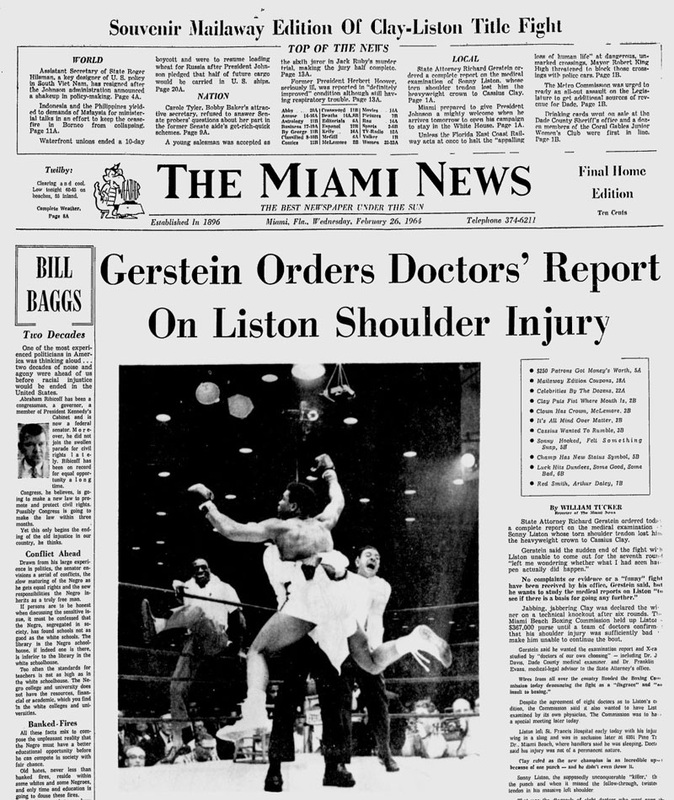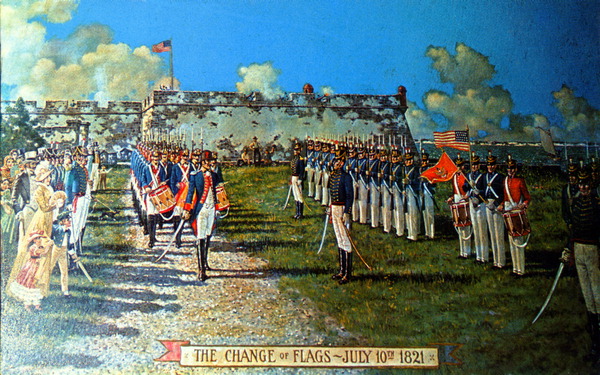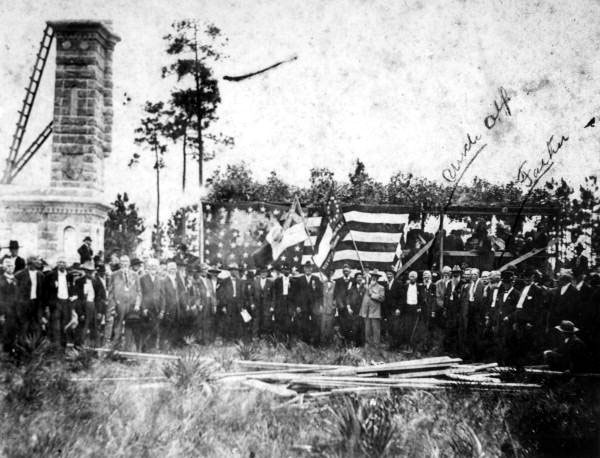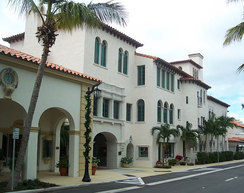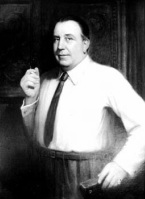Feb. 28, 1958: West Palm Beach moves to sell city golf course
after federal court rules 'Negroes' must be allowed to play

After exhausting its appeals of a federal court injunction forcing the city of West Palm Beach to allow "Negroes" to play on the city-owned golf course, the city's golf committee recommended that the city sell the course to a private holding company, the Palm Beach Post reported. "Admission to Country Club membership will be only by approval of the board of directors of the non-profit organization," the story said. Mayor Jack Faircloth chaired the golf committee. The injunction allowing African Americans to play on the course was issued the previous June following a lawsuit by four men who contended the city violated their civil rights by not allowing them to play the course. The court noted that its newest ruling was its fourth on the matter and warned, "There is no profit in again beating this thrice-threshed straw." The city contended it was unaware of the latest ruling as it recommended sale of the golf course. The planned sale, however, would never be finalized. Palm Beach County's first African American attorney, William M. Holland, successfully fought the effort to sell the course to avoid integration. Holland became a revered civil rights hero in South Florida after leading successful efforts to integrate schools, retail stores, the airport taxi service, and Florida Turnpike restaurants and bathrooms. Read the stories in the Palm Beach Post: Court Upholds Golf Course Race Ban; Sale to Holding Company Advocated and William Holland, civil rights champion, dies
Feb. 27, 1978: Chlorine tank rupture kills 8; two towns evacuated
A second Florida panhandle town was evacuated in the wake of a freight train derailment that ruptured a tank car carrying chlorine gas. Eight people were killed instantly following the rupture, as they were enveloped by a searing greenish-yellow cloud, the Associated Press reported. The cloud's effect was described as "instant death" by an EPA official. "It literally burns your lungs up," he said. Car engines stalled as the cloud moved over them, cutting off oxygen needed for combustion. Cars careened into roadside ditches. Police found people stumbling along the highway, vomiting and screaming for help. Most of the dead were young adults or teenagers who had been raccoon hunting in swamps near the track when the cloud swept over them. About 2,500 residents of Youngstown were evacuated on the day of the crash. After the wind shifted toward the north the following day, 250 residents were evacuated from Fountain, 20 miles north of Youngstown, as a precaution. Read the stories in the Sarasota Herald-Tribune: Chlorine Fumes Cause 2nd Town to Leave Area and Gas From Ruptured Tank Car Kills Eight, Drives 2,500 From Homes In North Florida
Feb. 26, 1927: Behold the wonder and success of St. Petersburg
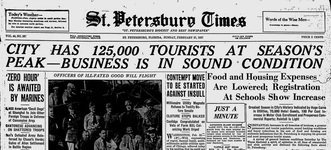
The St. Petersburg Times took a survey and found everything was fantastic. It's the "Greatest Season in City's History," declared a headline the next day. Could it possibly get any better? "Substantial increases in all branches of business, a greater permanent and tourist population, sound banking conditions and heavy reductions in the cost of food and housing are authentic indications that St. Petersburg is enjoying its greatest and most prosperous tourist season," the story said. The tourist population was 125,000 compared to 80,000 permanent residents. Also noted were increases in school registration, long distance phone calls, gas meters in service, water meters in service, motor club registration, lower cost of rents on houses and apartments, low rainfall in January and an average January temperature of 63.2 degrees. The tourist season brought 70,000 to the city's hotels and "many are turning away guests," the story said. A statement by Mayor R.S. Pearce lauded "a healthy increase in the number and character of our winter visitors, by good business conditions and an unrivaled spirit of progressiveness." Banks are in "a splendid condition" as is a new million dollar municipal recreation pier that "stands as a monument to the visitors and is a token of the regard of the city for its winter residents."

And if that's not exuberant enough, a writer named Aloysus Coll chimes in with a rapturous and lyrical essay vividly describing the sights and sounds of the city's sweet success. The writing is way over the top, but its full-flowered prose is undeniably entertaining and cinematic. "Yachts--from Michigan, from New York, Boston--argosies that ride the blue waters lapping the doorsteps of St. Petersburg. Venice from the 48 states! Venice with the glow of the Lida and the soul of America! Balm in the breeze, breeze on the flag, the guest of yonder city on the deck and supper in the stateroom. The spirit of St. Petersburg on the wings of the water; the guest of the city on the wings of her joy!"
It's impossible today to imagine a daily newspaper, or any of our media for that matter, basking in such wide-eyed optimism. And in retrospect, we can smile at the naivety of these accounts. The reporters and editors of the St. Petersburg Times had no idea of the horrors just around the corner -- the stock market crash of 1929 and the Great Depression that followed; and the grueling years of World War II when defense requirements supplanted Florida's tourism economy.
So this page stands as a monument to Florida at its most optimistic -- reveling in its success, soaking in its beauty, and beholding the multitudes that followed the beacon of its promise. Read two stories in the St. Petersburg Times: City Has 125,000 Tourists At Season's Peak--Business Is In Sound Condition and St. Petersburg--Varied Play--Gay Tourists
It's impossible today to imagine a daily newspaper, or any of our media for that matter, basking in such wide-eyed optimism. And in retrospect, we can smile at the naivety of these accounts. The reporters and editors of the St. Petersburg Times had no idea of the horrors just around the corner -- the stock market crash of 1929 and the Great Depression that followed; and the grueling years of World War II when defense requirements supplanted Florida's tourism economy.
So this page stands as a monument to Florida at its most optimistic -- reveling in its success, soaking in its beauty, and beholding the multitudes that followed the beacon of its promise. Read two stories in the St. Petersburg Times: City Has 125,000 Tourists At Season's Peak--Business Is In Sound Condition and St. Petersburg--Varied Play--Gay Tourists
Feb. 25, 1964: Miami Beach fight introduces world to Clay/Ali
|
In Miami Beach, Cassius Clay defeated Sonny Liston on a technical knockout that introduced Clay -- who later changed his name to Muhammad Ali -- to the world. But suspicions were immediately raised that the fight was fixed when Liston failed to come out for the seventh round and State Attorney Richard Gerstein asked for a medical report to determine whether Liston actually tore his shoulder tendon. "Wires from all over the country flooded the (Miami) Boxing Commission today denouncing the fight as a 'disgrace' and 'an insult to boxing,'" the Miami News reported the next day. Liston, who was supposedly unbeatable, seemed to beat himself when he threw a punch and missed, twisting the tendon.
|
After the fight, Clay danced in the center of the ring, proclaiming to ringside reporters, "I'm king of the world! I'm king of the world!" But even the FBI was suspicious about the outcome and ordered an investigation into whether the fight was fixed by an Las Vegas figure tied to Liston and organized crime, according to a Washington Times story this month based on records the paper obtained under the Freedom of Information Act.
A fix was never proven. In a rematch between the two fighters 15 months later in Maine, Liston went down halfway through the first round from what was called a "phantom punch" by Ali that also spawned rumors of a fix. Liston died from an apparent heroin overdose in 1971. Ali, or course, went on to a storied career and remains one of the world's most recognizable sports figures. Read the story in the Miami News: Gerstein Orders Doctors' Report On Liston Shoulder Injury • Read the story in the Washington Times: FBI suspected iconic 1964 Ali-Liston fight was rigged by mob • Check out photo gallery from Time-Life: Clay vs. Liston in Miami Beach: The Night 'The Greatest' Was Born
A fix was never proven. In a rematch between the two fighters 15 months later in Maine, Liston went down halfway through the first round from what was called a "phantom punch" by Ali that also spawned rumors of a fix. Liston died from an apparent heroin overdose in 1971. Ali, or course, went on to a storied career and remains one of the world's most recognizable sports figures. Read the story in the Miami News: Gerstein Orders Doctors' Report On Liston Shoulder Injury • Read the story in the Washington Times: FBI suspected iconic 1964 Ali-Liston fight was rigged by mob • Check out photo gallery from Time-Life: Clay vs. Liston in Miami Beach: The Night 'The Greatest' Was Born
Feb. 24, 1932: 'Doom' predicted if Dems nominate 'Wet' for prez
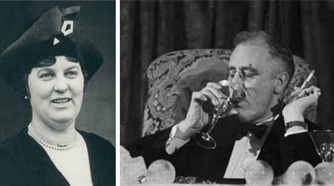 FDR campaigned on prohibition repeal
FDR campaigned on prohibition repeal
In an address to the Anti-Saloon League of America, a leading opponent of the drive to repeal Prohibition warned that the Democratic Party was "doomed to disruption" if it nominates a "wet" as president for the 1932 election. Jesse W. Nicholoson, president of the National Woman's Democratic Law Enforcement League, said in St. Petersburg that her organization could not support any of the five party candidates, including Gov. Franklin D. Roosevelt of New York. "I am here to issue a warning to Democratic Party leaders that women will not surrender to a nullificationist," she said. Nicholoson opposed Roosevelt after he was nominated as the party's candidate for president that year and was one of the only critics who raised his paralysis as an issue, calling him "unfit physically" for the office. Prohibition, the law that banned sale, manufacture, importation and transportation of alcoholic beverages nationwide, was enacted in 1920 but spawned a vast black market and an epidemic of criminal gang violence in the 1920s. Roosevelt supported repeal during his 1932 campaign and signed a bill allowing sale of 3.2 percent beer the following March, shortly after he became president. Repeal of Prohibition was fully ratified on December 5, 1933 after approval by 38 states. Florida was the 31st state to reject Prohibition, voting on Nov. 14. Read the story in the Palm Beach Post: Democrats Warned Not to Name "Wet"
Feb. 23, 1958: Last NASCAR race held on beach course
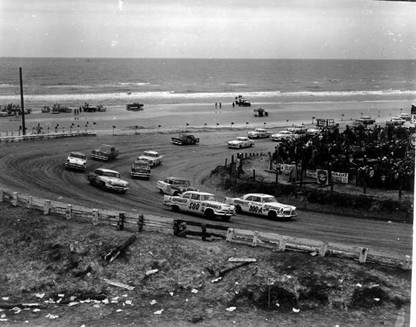 Automobile race on beach, 1956. State Archives of Florida, Florida Memory
Automobile race on beach, 1956. State Archives of Florida, Florida Memory
The last NASCAR Grand National race was held on the 4.1-mile beach oval in Daytona, ending a 22-year tradition. On this day in 1959, the first Daytona 500 was held at the new Daytona International Speedway. The last beach race, a 160-miler, was the most exciting in history, according to Daytona Beach Morning Journal writer Bernard Kahn. Paul Goldsmith and Curtis Turner dueled from start to finish, with Goldsmith winning by two seconds. A crowd of 35,000 watched, the report said. The beach course was started in 1927, when Henry Segrave drove his Sunbeam 1000 to a world land speed record of 203.79 mph. William France Sr. took over the track in 1938 and promoted races there until World War II. In 1948, France and some fellow promoters formed the National Association for Stock Car Auto Racing at Daytona Beach's Streamline Hotel. In 1953, France realized a larger facility would soon be needed to accommodate the growing race crowds, and began negotiations to establish a new 2.5-mile superspeedway on property owned by the county, well west of the beach. Read the story in the Daytona Beach Morning Journal: Wins By Dramatic Two Second Finish in 'Farewell' Car Race
Feb. 22, 1819: Treaty with Spain makes the Floridas part of the U.S.
|
From Florida Historical Society: Secretary Of State John Quincy Adams and Spanish minister Luis de Onís signed the Adams-Onís Treaty, also known as the Transcontinental Treaty, ceding the Floridas to the United States on this date. After the American Revolution, Spain received the Florida colonies back from Britain and almost immediately, tension along the border with the newly independent United States of America began.
|
Spain’s colonies in Florida were severely weakened and unsanctioned American raids into Spanish Florida became more frequent, most notably General Andrew Jackson’s invasion of West Florida and occupation of Pensacola in 1817-1818. Although the focus of the treaty was to secure Florida, it also set a western boundary between the United States and New Spain. The treaty was negotiated and signed in Washington in 1819, however full ratification on both sides did not occur until two years later with the official proclamation of the treaty occurring on February 22nd, 1821. Visit Florida Historical Society's web site: myfloridahistory.org
Feb. 21, 1927: Motorist handbook official says roads better than ever
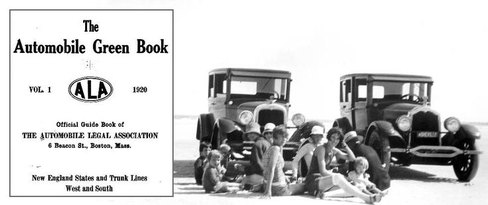
It was the Google Maps of its era. The Automobile Green Book - hundreds of pages of turn-by-turn directions for routes between cities all over the nation - was published each year. Looking at it today will make you realize how much we take our modern road system for granted. J.E. McGee, district manager of the book, declared Florida's roads in good shape in 1927, according to the St. Petersburg Times. This was the eighth winter McGee had driven down to Florida, and he hadn't always found roads in such good condition. "When I first came down, the roads were mostly dirt and sand and little bridges and culverts were out all along the way," he said. "You didn't travel without hammer and nails to mend broken bridges in those days and it would have been a good plan to take a good strong mule along too, to pull you out of the mud on occasion. I used to go along about five miles an hour, holding the wheel tight and wishing." But in 1927, there's no better way to hit Florida than in your own car, McGee said. Roads throughout the U.S. are improving so rapidly that within a year, motorists will be able to travel from Maine to Florida and only have to drive on 175 miles of unpaved road, he said. Read the story in the St. Petersburg Times: Visitor Lauds Florida Roads • Check out directions from Daytona Beach to West Palm Beach and St. Petersburg in the Automobile Green Book on archive.org
Feb. 20, 1864: Confederacy wins Florida's largest Civil War battle
The Confederate Army won the largest Civil War battle fought in Florida and thus retained control of interior Florida in the Battle of Olustee near Lake City. After landing in Jacksonville earlier in February, Union Gen. Truman Seymour moved his troops toward Lake City to destroy a railroad bridge and secure the northern part of the state. They were met at Ocean Pond by Confederate Gen. Joseph Finegan, and with about 5,000 men on each side, an intense battle ensued. Seymour began to retreat by late afternoon after realizing his side had lost.
|
Three regiments of African American troops fought on the Union side and suffered heavy casualties. The Union side suffered about 1,800 casualties, including 203 killed and 506 missing. The Confederacy lost 93 men, 850 were wounded and 6 went missing. Most of Florida remained in Confederate hands through the end of the war. The battle is commemorated each year with a historical reenactment at the site, Olustee Battlefield Historic State Park, and by a separate event, the Olustee Battle Festival, in Lake City.
|
Feb. 19, 1928: Dry agents vexed by 'Coconut Hootch of Lee County'
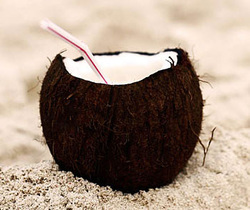
A new form of "bootless" bootlegging has Uncle Sam's prohibition law enforcers scratching their heads, the Miami News reported. Natives on Captiva Island, near Fort Myers in Lee County, have apparently figured out how to turn coconut milk into an intoxicating alcoholic beverage without a distillery. Kindly, the newspaper shared the procedure with its readers: Bore a hole through the coconut to the milk. Deposit two spoons of brown sugar to the milk. Cork the opening so it's airtight. Wait three weeks and pour out half a pint of whiskey-colored liquid. "The practice is being widely followed on the islands where until recently coconuts were plentiful," the paper reported. Read the story in the Miami News: Coconut Hootch of Lee County Vexes Dry Men
Feb. 18, 2001: NASCAR idol Dale Earnhardt dies at end of race
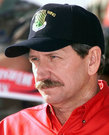 Earnhardt
Earnhardt
Dale Earnhardt, the most popular star of NASCAR's modern era, died from injuries suffered when his car hit the wall at the end of the Daytona 500. Earnhardt was known as "The Intimidator" for his aggressive driving style, and his stature in the sport was comparable to basketball's Michael Jordan and pop music's Elvis Presley. Earnhardt was a seven-time champion of the sport's premiere division, now called The Sprint Cup, but he did not win the biggest race, the Daytona 500, until 1998, three years before his death. Following Earnhardt's death, NASCAR implemented several new safety measures, including mandating use of head and neck restraints, development of a roof hatch escape system, installation of barriers at all oval tracks, and ultimately, development of a new safer "Car of Tomorrow." Read the story by ABC News: NASCAR star Dale Earnhardt dies in race
Feb. 17, 1976: First Daughter arrives in Palm Beach for fashion shoot
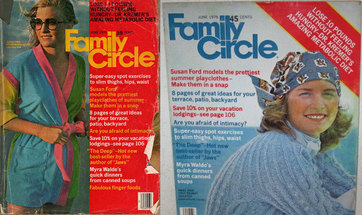
Cloaked in a veil of secrecy, 18-year-old Susan Ford, daughter of President Gerald Ford, arrived in Palm Beach for a fashion shoot. Of course, the Republican president's daughter wasn't modeling slinky gowns for Cosmopolitan or Vogue. Not in an election year. Miss Ford modeled casual summer fashions for Family Circle, the Palm Beach Post reported. Caldwell Robinson, Ford's election committee chairman in Palm Beach County, was miffed the White House kept the First Daughter's arrival a secret from him. Miss Ford's entourage included Secret Service agents, photographers, models and a Riviera Beach hairdresser. Miss Ford was photographed in seven settings around Palm Beach, including The Breakers swimming pool, a tennis court and on the deck of a sailboat. The hairdresser, Gergory Hauptner, said Miss Ford came across as "a spunky chick, congenial and refreshing." Susan Ford's stint in front of the camera was a change of pace after interning the previous summer as a photographer for the Topeka (Kansas) Capitol-Journal. She went on to become a professional photojournalist for the Associated Press, Newsweek, Money Magazine and Ladies Home Journal. She shot publicity stills for the movie Jaws 2. In 1992, she became a member of the board of the Betty Ford Center, the drug and alcohol treatment center founded by her mother, and she succeeded her mother as chairman of the board in 2002. Read the story in the Palm Beach Post: Spunky Susan Has Quiet Day of Modeling
Feb. 16, 1964: Beatlemania hits Miami for 2nd Ed Sullivan Show gig
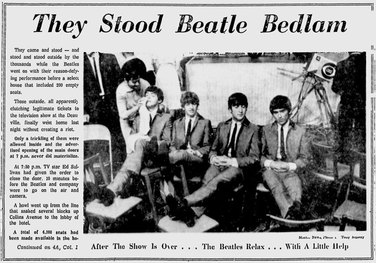
Thousands of screaming fans surrounded the Deauville Hotel in Miami Beach and went home without creating a riot after they failed to get seats for the Beatles' performance on the Ed Sullivan Show. The broadcast happened a week after the Fab Four's landmark first appearance on the Sullivan show in New York City. The fans waited in a line that snaked several blocks up Collins Avenue to the lobby of the hotel, and all had apparently legitimate tickets to the performance, the Miami News reported. Inexplicably, about 200 of the 4,100 available seats for the show were empty when the show went on, the story said. Tickets that had been issued free by CBS and the hotel were being scalped for up to $15. A "similarly hysterical audience" of 4,000 enjoyed a rehearsal performance by the band earlier in the day. During the show, typical fans "stood transfixed and incredulous as (the band) belted their guitars and vigorously waggled their mops of hair," the paper reported.
|
|
The Beatles arrived in Miami on Feb. 13, and 100 police were dispatched to Miami International Airport to keep the throngs off the taxi and ramp area. Still, the band was "nearly squashed" when scores of teens broke through the lines and rushed limousines waiting to whisk the band away. They enjoyed some vacation time, hitting the Peppermint House of Twist and the Wreck Bar at the Castaways soon after their arrival.
|
Although the paper ran several stories during the Beatles' stay in Miami, there was a somewhat snobbish tone to the coverage. "I'm an Andy Williams fan but I'll have to admit the Beatles took Miami," wrote reporter Becky Pierce. Another reporter, Miller Davis, described the band as "hip-wiggling, face-contorting, young Englishmen who wear bangs down to their eyebrows." Read the story in The Miami News: They Stood Beatle Bedlam • Read the Miami Herald's commemoration of the 50th anniversary of the Beatles in Miami
Feb. 15, 1933: FDR narrowly escapes assassination attempt in Miami
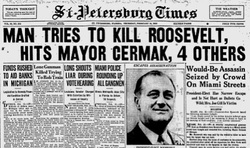
From Florida Historical Society: President-Elect Franklin Delano Roosevelt narrowly escaped an assassination attempt shortly after giving a speech at Bayfront Park in Miami. As Roosevelt stood on stage, the would-be assassin, Guiseppe Zangara, an Italian immigrant and unemployed bricklayer, fired five shots. He missed Roosevelt but fatally wounded Chicago Mayor Anton Cermak and injured four others. Zangara was wrestled to the ground and arrested. He was quickly found guilty of murder and executed the following month at Raiford Prison in Union County. Read the story in the St. Petersburg Times: Man Tries To Kill Roosevelt, Hits Mayor Cermak, 4 Others
Feb. 14, 1991: Oldest person in world dies at 116 in Palatka
The Guinness Book of World Records' reigning "Oldest Person in the World" died at 116 in Palatka. Carrie White was born in 1874, when Ulysses S. Grant was president. She was named oldest person by the famous record book in 1988. Seventy-five of her living years were spent at Florida State Hospital in Chattahoochee, where her husband had her placed following a diagnosis for "post typhoid psychosis" at age 35. She was released from the hospital at 109 and spent her remaining years in a nursing home in Palatka. Staff members there threw birthday parties for her, and President Ronald Reagan phoned her on her final birthday. She loved all the attention that came from the Guinness Book recognition, her guardian told the Associated Press. The oldest living person in the world currently is Misao Okawa of Japan, who will be 116 on March 5. Read the story in the Sarasota Herald-Tribune: 'Oldest' person dies at 116
Feb. 13, 1929: Secret is out about Florida City's unshorn wild man
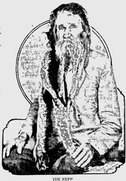
Why is a 72-year-old Florida City man walking around with six-foot-long hair and three-foot whiskers? He's not in a religious cult and he's not posing as a hermit. The Miami Daily News and Metropolis provided the answers that "curious people" have been wondering about the 17-year resident. Turns out that 20 years earlier, Ide Neff was a "husky ranch hand" near Tacoma, Wash., engaged to "comely maiden" Aria Powell. Neff rented a house for the couple and invited 70 friends to a barn dance reception. The bride's friends stitched an elaborate wedding gown and on the morning of the wedding, Neff was sitting in the barber shop when a friend entered the shop and whispered into Neff's ear. Neff stood up and told the barber that he'd changed his mind about his shave and haircut. His friend had just told him that his bride-to-be eloped with another man. "From that morning I swore I would never have my hair cut again and would never allow myself to be shaved." Neff declared. He drifted for the next three years, pursuing cheap pleasures and hanging out with tramps and hobos. He moved to a small tract his brother owned near Florida City and built a shack, where he lives surrounded by stacks of magazines and curios collected in his wanderings. "He shuns companionship of his fellows" and sleeps on discarded fertilizer sacks tacked across a frame structure. His only income derives from his "pitiful attempt at truck farming." "He says the reason for his many failures is his lack of interest in life," the story said. Lately he has become despondent over rumors he would be placed in the county hospital on complaints of neighbors. "He says he is getting along in the manner he desires and asks people to let him alone." Read the story in the Miami Daily News and Metropolis: Being Jilted at Altar Causes Long-Haired Florida City Hermit to Go Unshorn 20 Years
Feb. 12, 1964: Youths disarm dynamite, save oncoming FEC train
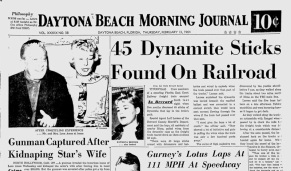 Feb. 13, 1964 front page
Feb. 13, 1964 front page
It was a happy page in an otherwise grim chapter of Florida railroad history. During the opening months of what turned into a 14-year strike by Florida East Coast Railway workers, saboteurs caused several huge train wrecks by laying explosives under tracks of oncoming trains. But one such wreck was prevented on the evening of Feb. 12, when five boys walking along the tracks north of Mims in northern Brevard County came across a battery connected by wires to 45 sticks of dynamite buried beneath the tracks. As they heard the whistle of an oncoming train, they pulled the wires from the dynamite caps, preventing the explosion and saving the train's crew from certain death. The boys, who were returning home after an afternoon of fishing, were not immediately identified by FBI agents investigating the incident.
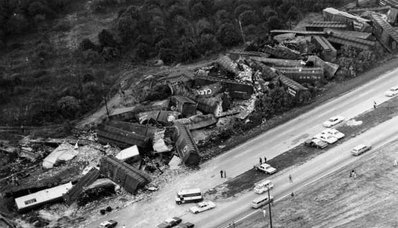 Oct. 1963 derailment near New Smyrna Beach
Oct. 1963 derailment near New Smyrna Beach
The dynamite was discovered just three days after several blasts derailed 33 cars of a 93-car train in metropolitan Miami, only yards from U.S. 1. A second train was blown up that same day about 15 miles from where President Lyndon Johnson was attending a groundbreaking ceremony near Palatka. Four months earlier, a deliberately loosened rail sent four locomotives and 52 cars off the tracks just south of New Smyrna Beach. Two days after the youths thwarted the dynamite attack, a tank car on another train exploded near New Smyrna Beach, derailing 10 cars. A few weeks later, four former railway workers -- all members or supporters of the striking unions -- were charged and eventually convicted of attempting to blow up a freight train with dynamite. Read the story in the Daytona Beach Morning Journal: 45 Dynamite Sticks Found on Railroad • Read more about the railway strike in excerpt from the book "From Speedway to Sunshine: The Story of the Florida East Coast Railway"
Feb. 11, 1894: Flagler opens Royal Poinciana Hotel in Palm Beach
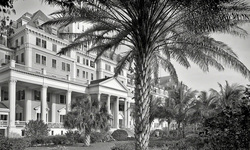 Royal Poinciana Hotel, Palm Beach
Royal Poinciana Hotel, Palm Beach
The Royal Poinciana Hotel established Palm Beach as the East Coast's winter playground for the rich. It was built by Henry Flagler, the oil tycoon who brought Florida into the modern age by laying his Florida East Coast Railway south to Key West. Flagler built a spur line across Lake Worth from West Palm Beach so hotel guests could arrive at the front door in their own private rail cars. At its largest, the six-story Colonial-style hotel extended seven blocks and accommodated 1,200 guests. When they weren't out in their yachts, guests played golf, tennis and canasta during the day, enjoyed afternoon dancing in the Cocoanut Grove tea garden, then ate in the huge dining room.
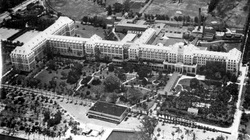 Royal Poinciana Hotel, aerial view
Royal Poinciana Hotel, aerial view
After Flagler opened The Palm Beach Inn in 1896, employees would shuttle patrons between the two hotels in wheeled chairs. In those days, the social season ran from mid-December to Feb. 23, the day after Flagler held his annual George Washington Ball at his mansion, The Whitehall. But rich people started to tire of the big resort scene by the 1920s and gravitated toward smaller, more private luxury inns and newer European-style hotels being built on the island. The Great Depression took its toll on business in the 1930s, and the hotel was closed in 1934 and torn down in 1935. Flagler's Palm Beach Inn was renamed The Breakers in 1901 and remains open as a high-class resort today. Read the story in the Palm Beach Post: Flagler's Royal Poinciana Hotel set guiding standard in its day.
Feb. 10, 1930: Six of world's largest sugar mills coming to Everglades
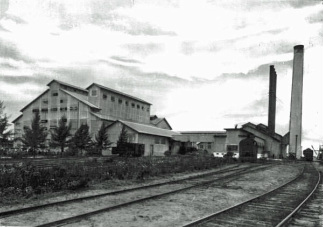 U.S. Sugar Co. mill in Clewiston, 1930s
U.S. Sugar Co. mill in Clewiston, 1930s
The Southern Sugar Company announced plans to build six of the world's largest sugar mills in the the heart of the Everglades within six years, according to the Associated Press. Speaking at a banquet of the Associated Industries of Florida, John L. Doggett, attorney for the company, said the six mills would employ 25,000 men and produce 500,000 tons of sugar a year. What the story didn't report was that Southern Sugar was already in financial trouble as the Great Depression was taking hold. Four months later, in June, the company would be in court facing bankruptcy charges, with Doggett admitting the company could not pay its 2,500 employees until it was allowed to borrow money through sale of receiver's certificates.
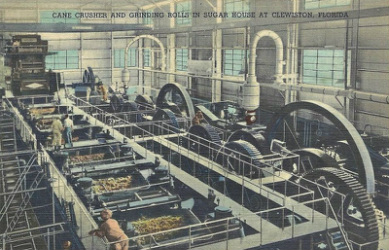 Inside U.S. Sugar Co.'s mill in Clewiston, 1930s
Inside U.S. Sugar Co.'s mill in Clewiston, 1930s
The company, with just one mill in Clewiston, was acquired the next year by Flint, Mich., industrialist Charles Stewart Mott and transformed into the United States Sugar Company, which is the nation's largest sugar producer today. The vision of six or more sugar mills in the Everglades didn't take hold until after the Cuban Revolution, when the U.S. government banned importation of Cuban sugar and subsidized sugar production domestically. By 1988-89, seven mills in the Everglades were producing more than 1.5 million tons of sugar a year. Today, sugar cane is grown on 450,000 acres in the Everglades, mostly around the southern half of Lake Okeechobee. The industry is closely monitored by the federal government and environmental groups and is under regulation to reduce the amount of phosphorus produced by fertilizers used in the cane fields. The industry is also forced to balance its interests against long-term efforts to restore the natural southward flow of water through the Everglades, as much of the water flow problems were caused by decades of irrigation, dredging and canal-building by the industry. Everglades restoration programs costing billions of dollars have been underway for the past two decades, always involving sticky negotiations with the largest sugar producers.
Further reading:
• St. Petersburg Times: Huge Program of Expansion is Announced
• The Evening Independent: Bankruptcy Charge of Southern Sugar Company Dismissed
• Excerpt on sugarcane production in the Everglades from book, Everglades: The Ecosystem and its Restoration by Steve Davis and John C. Ogden
• The United States Sugar Company's account of its history
Further reading:
• St. Petersburg Times: Huge Program of Expansion is Announced
• The Evening Independent: Bankruptcy Charge of Southern Sugar Company Dismissed
• Excerpt on sugarcane production in the Everglades from book, Everglades: The Ecosystem and its Restoration by Steve Davis and John C. Ogden
• The United States Sugar Company's account of its history
Feb. 9, 1895: Florida wakes up to devastation of "Great Freeze"
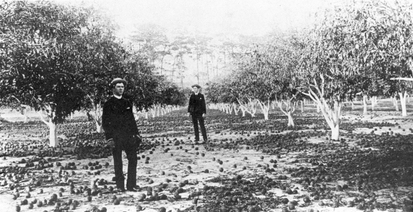 Citrus farmers survey devastation after The Great Freeze
Citrus farmers survey devastation after The Great Freeze
Citrus farmers in Florida woke up to widespread crop destruction following the second of two deep freezes. The first happened in late December 1894 when temperatures plummeted as low as 18 degrees in Orlando and 27 in West Palm Beach. That freeze did not destroy most trees and was followed by an unusually warm spell that produced tender new vegetation prior to the February event and left them especially vulnerable. After the February freeze, all citrus varieties froze on the trees, and bark split from top to bottom. Citrus production in Florida dropped from six million boxes a year to less than 100,000. Many farmers left their lands and relocated to frost-proof areas south, west to California, or moved back north. Land values in citrus-producing areas fell from $1,000 to $10 an acre. Citrus production in Florida didn't reach a million boxes a year again until 1901.
More information on The Great Freeze: Historic City News article: The big freeze II • Florida Citrus Mutual: Timeline of Major Florida Freezes • Florida Memory Blog: The Great Freeze
More information on The Great Freeze: Historic City News article: The big freeze II • Florida Citrus Mutual: Timeline of Major Florida Freezes • Florida Memory Blog: The Great Freeze
Feb. 8, 1961: 'Highways to Florida Closed by Snow'
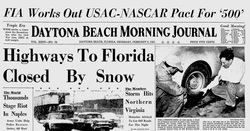
From the "It's all about us" department: It's tourist season in Florida, the races are underway, and there's a huge paralyzing snowstorm in the Northeast. How does it play in the Daytona Beach Morning Journal? "Highways to Florida Closed By Snow" read the headline in the next day's paper. Hundreds of schools in Virginia were closed after two feet of snow fell. Three major north-south highways in that state were shut down for all but emergency traffic. Trucks and cars were stranded throughout the mountains. In New York City, commuter trains were jammed and vehicles were buried. The Hudson River was choked with ice, making it difficult to get gasoline and heating oil upstate. Similar conditions were noted in Maryland, Pennsylvania and Washington D.C. Meanwhile, temperatures in Daytona Beach ranged from the low 60s to the upper 40s. There was no snow in the forecast. Read the story in the Daytona Beach Morning Journal
Feb. 7, 1987: New Sunshine Skyway Bridge dedicated
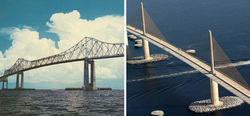 Sunshine Skyway Bridge, old and new
Sunshine Skyway Bridge, old and new
Nearly seven years after the tragic freighter crash that partly destroyed the original Sunshine Skyway Bridge and killed 35 people, 15,000 gathered to dedicate the new span over Tampa Bay. Attendees included Sen. Bob Graham, Gov. Bob Martinez and U.S. Rep. Lawton Chiles, the Lakeland Ledger reported. "We started the 21st century today," Graham said. The ceremony began with a moment of prayer for the 35 killed in the May 9, 1980 crash, when a freighter rammed the old bridge and sent cars into the bay. The new 21,877-foot cable-stayed bridge cost $244 million and took nearly five years to build. It now carries more than 50,000 vehicles a day. Read the story in the Lakeland Ledger: Skyway dedication brings out 15,000
Feb. 6, 1956: Stripteasers in trouble always make the front page
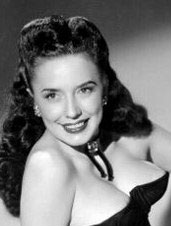 Evelyn West
Evelyn West
Bless our daily papers of the mid-20th century, when they were so widely read they could take a chance on offending an occasional reader without worrying it would put them out of business. The Miami News had fun with this tidbit about a Miami Beach stripteaser billed along the nightclub circuit as "Evelyn West and her $50,000 Treasure Chest." Ha. A bit risqué, but clean enough for a family paper, right? Then we learn: "Miss West, whose charms include a 45 1/2-inch bust reportedly insured by Lloyds of London, was arrested yesterday for failing to make civilian registration." Seems Miss West, 29, found herself in the "clutches of the law" and on the front page because she failed to register with the city within 48 hours after starting work, as required of all entertainers and service workers at the time. She was arrested at her employer's club, The Paper Doll, along with the club's "master of ceremonies," Headly S. Gump, 49, and both were released after posting bond. And by the way, Miss West lives at 530 Meridian Ave. We have a feeling she didn't live there long after this story was published. Read the story in the Miami News: Stripteaser Evelyn Runs Afoul of Law • Read about Evelyn West in Wikipedia
Feb. 5, 1933: Architect Addison Mizner dies at 61
|
Architect Addison Mizner, whose signature Spanish- Mediterranean building designs came to define the Palm Beach and Boca Raton look, died at 61. Mizner's style is imitated throughout South Florida today and many of his buildings are on the National Register of Historic Places.
|
Although he had no formal training, Mizner was possibly the nation's best-known architect by the 1920s. He developed numerous South Florida mansions as well as The Ritz-Carlton Cloister Inn (now The Boca Raton Resort & Club), The Boynton Beach Woman's Club, and the Boca Raton Administration Buildings.
While Florida resorts tended to rely on Northeastern wood-and-shingle designs in the early 20th century, Mizner designed oceanfront homes in a Mediterranean Revival style that found favor among wealthy residents. These houses were generally one-room deep to allow cross ventilation, kept kitchens off to the side to reduce heat, and were constructed of stone, tile and stucco to better withstand hurricanes. He also favored the barrel tile roofs common throughout the state to this day.
Mizner was a colorful speaker and writer, and found unexpected success early in his career with a book he co-authored, The Cynic's Calendar of Revised Wisdom for 1903. That was followed by several sequels, and a year before his death, Mizner published an autobiography covering his early life and carrer, The Many Mizners.
See examples of Mizner's architecture here • Read about Mizner at the Florida Artists Hall of Fame site
While Florida resorts tended to rely on Northeastern wood-and-shingle designs in the early 20th century, Mizner designed oceanfront homes in a Mediterranean Revival style that found favor among wealthy residents. These houses were generally one-room deep to allow cross ventilation, kept kitchens off to the side to reduce heat, and were constructed of stone, tile and stucco to better withstand hurricanes. He also favored the barrel tile roofs common throughout the state to this day.
Mizner was a colorful speaker and writer, and found unexpected success early in his career with a book he co-authored, The Cynic's Calendar of Revised Wisdom for 1903. That was followed by several sequels, and a year before his death, Mizner published an autobiography covering his early life and carrer, The Many Mizners.
See examples of Mizner's architecture here • Read about Mizner at the Florida Artists Hall of Fame site
Feb. 4, 1955: High court upholds sentence in "chicken" game death

Florida's Supreme Court upheld a 15-year prison sentence for a Fort Pierce stock car racer convicted for killing his best friend in a head-on automobile collision during a game of "chicken." John Henry Johns and his friend Henry Hayward Peterson were playing the daredevil game on an abandoned air strip near Fort Pierce on Oct. 26, 1952 when the two cars collided, killing Peterson instantly. Johns was convicted of manslaughter. In the game, two cars race directly toward each other. The first driver who veers away is called the chicken. Ruling on Johns' appeal of the sentence, the court found no basis for the claim that since the crash did not happen on a public road, that traffic rules did not apply. Johns' attorneys also argued that getting killed in a game of chicken was no different than getting killed in a football game. Read the story in the Daytona Beach Morning Journal: Chicken Game Still Murder, Court Rules
Feb. 3, 1922: Confidence games HQ busted in Fort Lauderdale
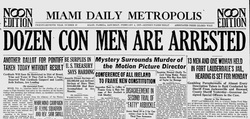
Like in a scene from "The Sting," 14 people were charged with running "confidence games" after a raid on a house in Fort Lauderdale turned up evidence of fake stock market transactions, betting on fake horse races "and the tapping of wires for other false information," according to a story in the Miami News. The raid, termed one of the largest ever staged in the state, occurred as a result of complaints by "the leading citizens of this city" who were convinced that "the local officers were not acting to wipe out the place which had been under suspicion by the citizens." They sent a petition to the governor requesting a special investigation. The governor then assigned a Duval County deputy to investigate the complaints. The Duval deputy then initiated the raid with 10 of the concerned citizens standing guard outside the house, the story said. Seized paraphernalia included a complete telegraph system, racetrack forms, and "good sized rolls of blank paper around which were wrapped one or two dollar bills." Investigators believed the house was the headquarters for a statewide operation, the story said. Read the story in the Miami News: Dozens Con Men Are Arrested
Feb. 2, 2007: Tornadoes march across Central Florida, killing 21

Twenty-one people lost their lives when three tornadoes rampaged across the state, ripping buildings off their foundations, picking up a semi-trailer and slamming it down on top of another, and obliterating mobile homes. The tornadoes struck between 3 a.m. and 4:30 a.m., while their victims slept and were less likely to hear any warnings. All of the fatalities occurred in mobile homes, with 19 of the deaths happening in Lake County. Around 500 homes were destroyed and hundreds more were damaged. States of emergency were declared in Lake, Seminole, Sumter and Volusia counties.
Read the story in the Lakeland Ledger: 'Like a Bomb Went Off'
Read this report from the University of Colorado Natural Hazards Center
Read this report from the University of Colorado Natural Hazards Center
Feb. 1, 1929: Bok Singing Tower dedicated in Lake Wales
|
From Florida Historical Society: The Bok Tower Gardens and Bird Sanctuary in Lake Wales was dedicated by President and Mrs. Calvin Coolidge on this date. The brainchild of Dutch immigrant, Edward W. Bok and his wife Mary Louis Curtis Bok who wintered in Florida, the complex features a 250 acre garden with thousands of different trees, shrubs and flowers designed by Fredrick Las Olmstead Jr.
|
|
The centerpiece of the gardens however, is the 205 foot-tall stone Gothic Revival and Art Deco tower which houses a 60-bell carillon. Over the years the site has become a major tourist attraction bringing thousands of people to the Lake Wales area every year. Click here to visit the Bok Tower Gardens web site.


